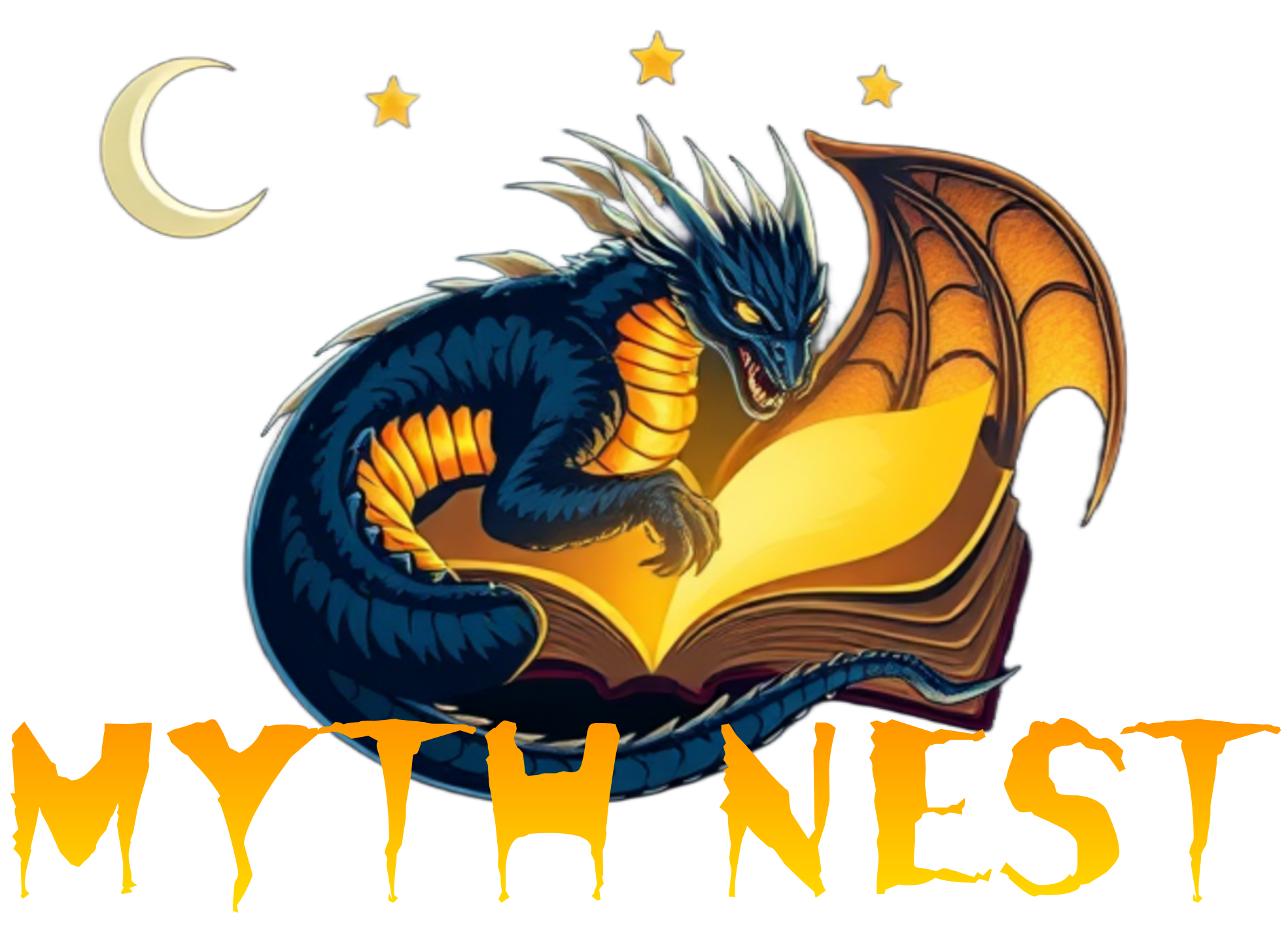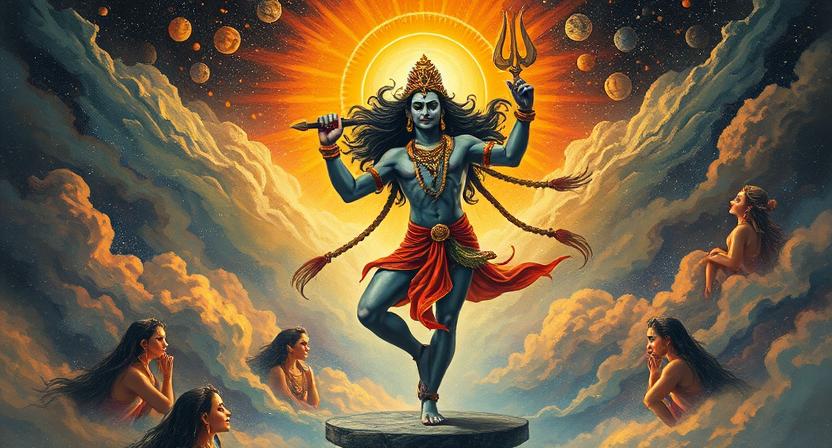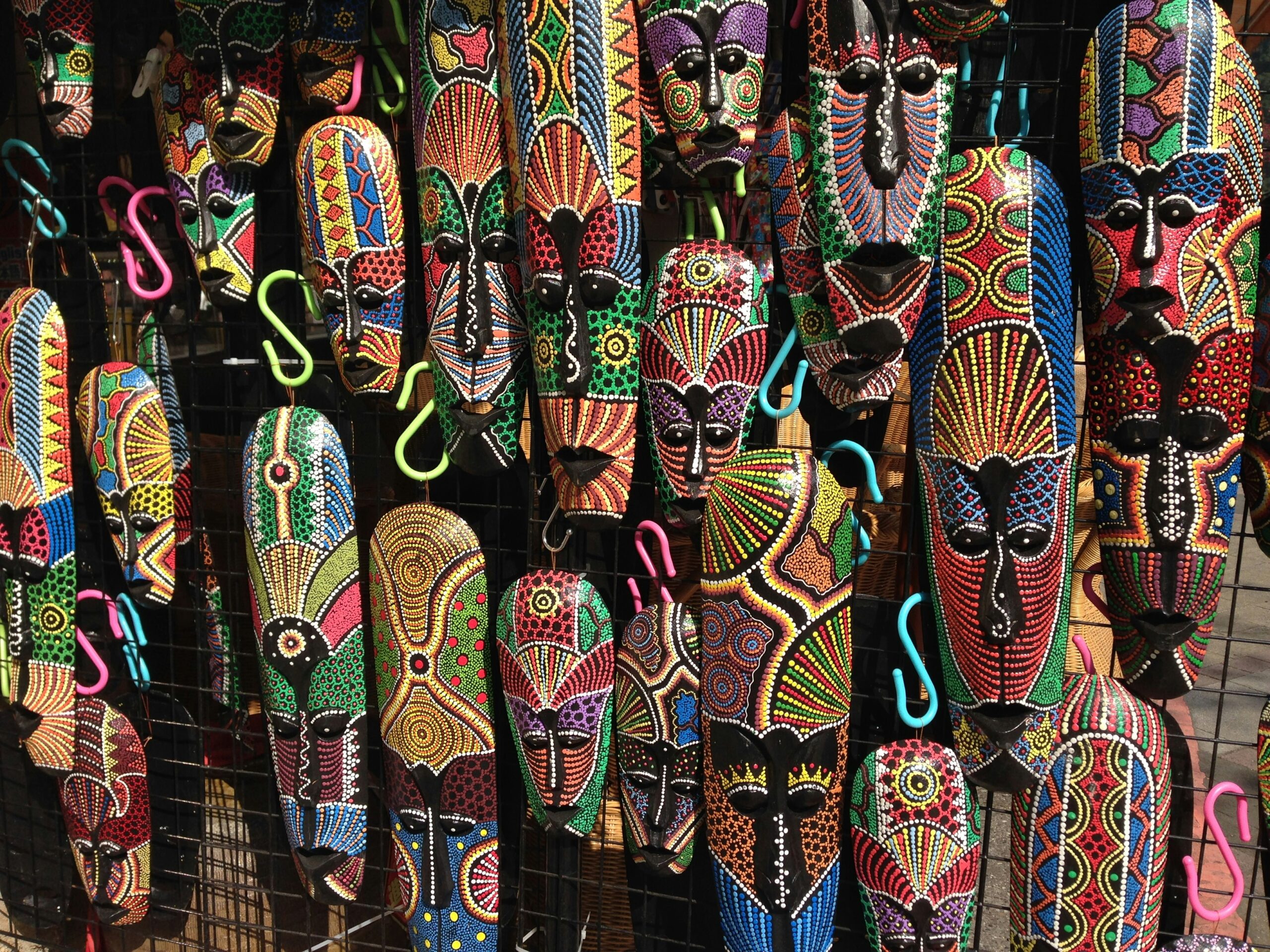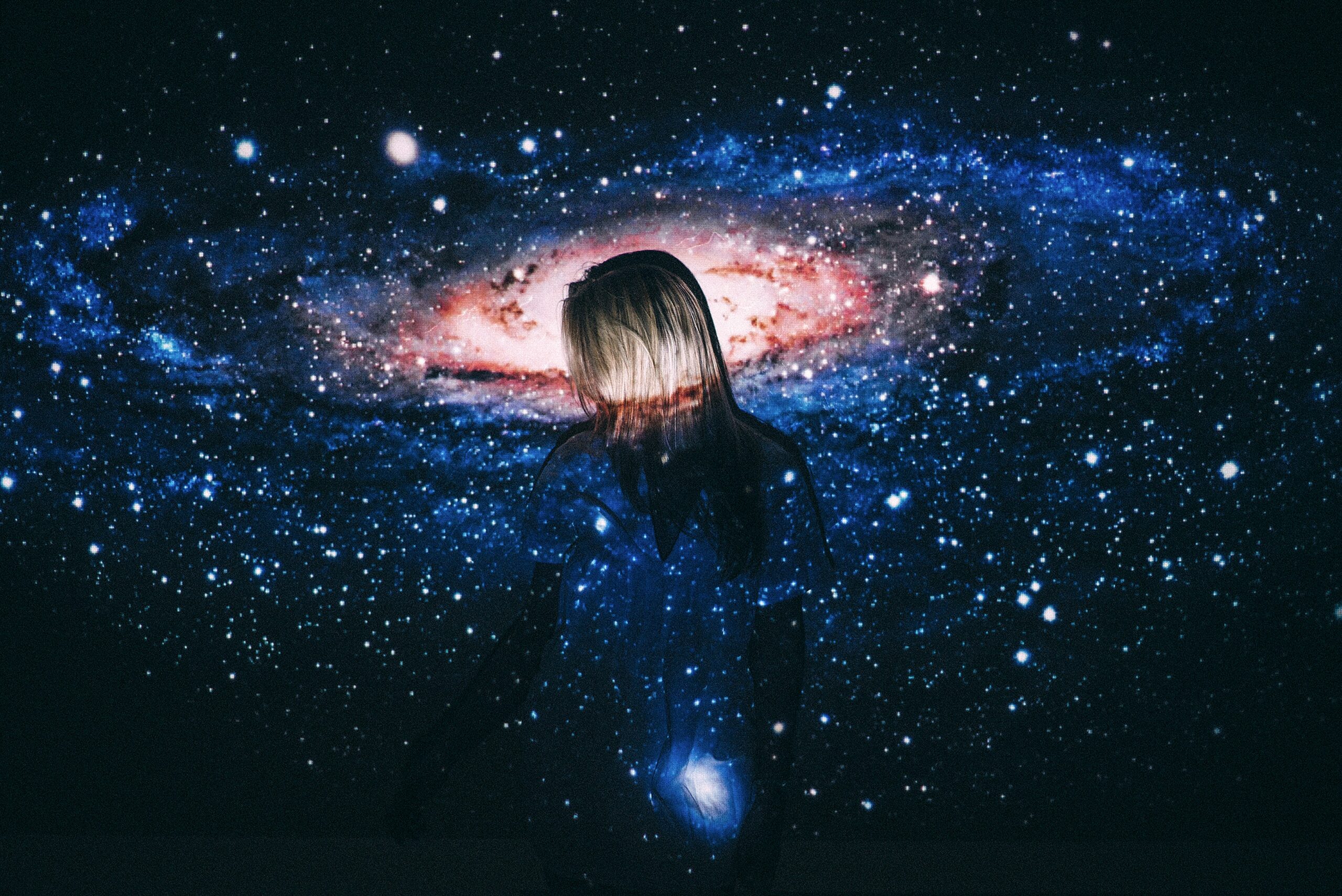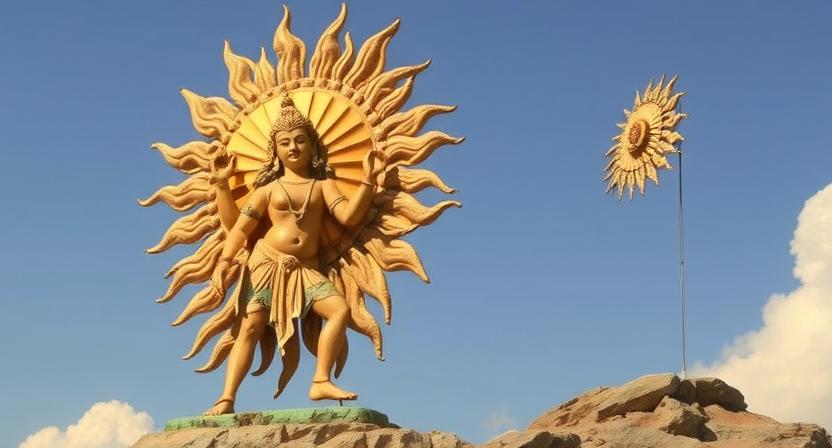Overview of Hindu Mythology
Hindu mythology is a vast and intricate tapestry of stories and legends that have been passed down through generations. These stories encompass a wide range of themes, from the adventures of gods and goddesses to the intricate workings of the universe. At the heart of Hindu mythology are the powerful deities who play a central role in shaping the world and influencing the lives of mortals.
The pantheon of Hindu gods and goddesses is diverse and multifaceted, with each deity possessing unique qualities and powers. From the benevolent Vishnu, the preserver of the universe, to the fierce goddess Kali, the destroyer of evil forces, these divine beings embody different aspects of existence and provide guidance and protection to their devotees. Hindu mythology serves as a rich source of moral lessons, philosophical insights, and spiritual guidance, offering a deeper understanding of the mysteries of life and the cosmos.
• Hindu mythology is a vast and intricate tapestry of stories and legends
• Stories encompass a wide range of themes, from adventures of gods to workings of the universe
• Powerful deities play central role in shaping world and influencing mortals
• Pantheon of Hindu gods and goddesses is diverse and multifaceted
• Each deity possesses unique qualities and powers
• Divine beings provide guidance and protection to their devotees
• Hindu mythology offers moral lessons, philosophical insights, spiritual guidance
The Role of Shiva in Hindu Cosmology
The Role of Shiva in Hindu Cosmology is crucial and multi-faceted. Shiva, one of the principal deities in Hinduism, is often depicted as the supreme being who oversees the cyclical nature of creation, preservation, and destruction in the universe.
Shiva’s role as the destroyer in Hindu cosmology signifies the necessary aspect of transformation and renewal that is essential for the continued existence of the world. As the cosmic dancer, Nataraja, Shiva performs the Tandava dance, symbolizing the rhythmic movements of the universe’s eternal cycles of birth, death, and rebirth.
• Shiva is considered the supreme being overseeing creation, preservation, and destruction
• Shiva’s role as the destroyer signifies transformation and renewal in the universe
• The Tandava dance symbolizes the eternal cycles of birth, death, and rebirth in Hindu cosmology
The Significance of Shiva’s Dance
Shiva’s Dance, known as the Tandava, holds immense significance in Hindu mythology and cosmology. This divine dance is believed to symbolize the cosmic cycles of creation, preservation, and destruction. As the Lord of Dance, Shiva’s movements are said to represent the rhythmic balance of the universe, where destruction paves the way for new beginnings and creation emerges from the ashes of destruction. The Tandava embodies the eternal flow of time, where all life forms and phenomena are subject to the relentless dance of Shiva.
The symbolism of Shiva’s Dance transcends mere physical movements and extends into the philosophical realm. It serves as a reminder of the impermanence of existence and the eternal nature of change. Through the Tandava, Shiva is depicted as the ultimate creator and destroyer, showcasing the dualistic nature of life itself. This cosmic dance of Shiva reflects the interconnectedness of all things in the universe and the ongoing cycle of birth, death, and rebirth that governs the cosmos.
• The Tandava symbolizes the cosmic cycles of creation, preservation, and destruction
• Shiva’s movements represent the rhythmic balance of the universe
• Destruction leads to new beginnings and creation emerges from destruction
• The dance embodies the eternal flow of time and all life forms are subject to it
The philosophical significance of Shiva’s Dance goes beyond physical movements. It serves as a powerful reminder of the impermanence of existence and the constant nature of change. Through the Tandava, Shiva is portrayed as both creator and destroyer, highlighting the dualistic essence of life itself. This cosmic dance portrays the interconnectedness of all things in the universe and illustrates the ongoing cycle of birth, death, and rebirth that governs the cosmos.
In essence, Shiva’s Dance represents not only a physical manifestation but also a profound philosophical concept that delves into fundamental truths about life, death, creation, destruction, and transformation. The symbolism embedded within this divine dance continues to captivate devotees and scholars alike with its timeless message about the cyclical nature of existence.
Interpretations of the Cosmic Dance
The Cosmic Dance of Shiva, known as the “Tandava,” is a powerful symbol in Hindu mythology that represents the rhythmic cycle of creation, preservation, and destruction. This dance is not just a physical expression but a profound cosmic event that encompasses the essence of existence itself. It is believed that Shiva’s dance symbolizes the eternal flow of energy in the universe, where creation emerges from destruction, and in turn, destruction paves the way for new creation.
Through various interpretations, the Cosmic Dance of Shiva is seen as a manifestation of divine balance and harmony. It is said to depict the intricate interplay between chaos and order, life and death, growth and decay. The swirling movements of Shiva’s dance are thought to symbolize the eternal dance of the cosmos, where every action is interconnected and every element is in a constant state of transformation. In this dance, Shiva is not just a deity but a cosmic force that embodies the dynamic and cyclical nature of the universe.
• The Tandava represents the cycle of creation, preservation, and destruction in Hindu mythology
• Shiva’s dance symbolizes the eternal flow of energy in the universe
• Various interpretations see the Cosmic Dance as a manifestation of divine balance and harmony
• The interplay between chaos and order, life and death is depicted in Shiva’s dance
• Shiva embodies the dynamic and cyclical nature of the universe through his Cosmic Dance
Symbolism of Shiva’s Dance
Shiva’s Dance holds deep symbolism in Hindu mythology, representing the cosmic cycle of creation, preservation, and destruction. The rhythmic movements form a powerful dance that conveys the eternal flow of time and the continuous cycle of birth and death. Each graceful posture of Shiva’s Dance symbolizes the interplay between the forces of creation and destruction, highlighting the dual nature of existence and the impermanence of life.
Furthermore, Shiva’s Dance is often depicted with fire emanating from his palms, symbolizing the powerful force of destruction that clears the path for new beginnings. The flames represent the transformative nature of Shiva’s Dance, where old structures are broken down to make way for regeneration and renewal. This fiery aspect of the dance signifies the burning away of ignorance and ego, facilitating spiritual growth and inner transformation.
• Shiva’s Dance represents the cosmic cycle of creation, preservation, and destruction
• The rhythmic movements symbolize the eternal flow of time and the continuous cycle of birth and death
• Each graceful posture highlights the interplay between creation and destruction in existence
• Fire emanating from Shiva’s palms signifies the powerful force of destruction clearing the path for new beginnings
• The flames represent transformation, breaking down old structures for regeneration and renewal
• The fiery aspect of the dance symbolizes burning away ignorance and ego for spiritual growth
The Creation of the Universe in Hindu Mythology
In Hindu mythology, the creation of the universe is attributed to the divine trinity consisting of Brahma, Vishnu, and Shiva. According to the mythological texts, Brahma is the creator, Vishnu is the preserver, and Shiva is the destroyer. The process of creation is believed to be cyclical, with the universe undergoing cycles of creation, preservation, and destruction.
In Hindu cosmology, the creation of the universe is often depicted as emerging from the cosmic dance of Shiva known as the Tandava. Shiva’s dance symbolizes the rhythmic movement of the cosmos, where destruction and creation are intertwined. The dance is said to represent the eternal cycle of birth and death, emphasizing the transient nature of existence and the continuous renewal of life.
• The divine trinity in Hindu mythology consists of Brahma, Vishnu, and Shiva
• Brahma is the creator, Vishnu is the preserver, and Shiva is the destroyer
• The universe undergoes cycles of creation, preservation, and destruction according to mythological texts
• In Hindu cosmology, creation is often depicted as emerging from Shiva’s cosmic dance known as the Tandava
• The Tandava symbolizes the rhythmic movement of the cosmos where destruction and creation are intertwined
• Shiva’s dance represents the eternal cycle of birth and death in Hindu mythology
The Role of Parvati in Shiva’s Dance
Parvati, also known as Shakti, is an integral figure in the cosmic dance of Shiva. She embodies the divine feminine energy that complements Shiva’s masculine power, representing the dynamic interplay of creation and destruction. Parvati’s presence in Shiva’s dance symbolizes the harmonious union of opposites, highlighting the balance and unity that is necessary for the continuous cycle of existence.
As the consort of Shiva, Parvati plays a crucial role in the cosmic dance by providing the nurturing and creative force that complements Shiva’s role as the destroyer. Together, they represent the cyclical nature of the universe, where creation, preservation, and destruction are interconnected and interdependent. Parvati’s influence in Shiva’s dance reminds us of the inherent duality and interconnectedness of all aspects of existence, reflecting the eternal dance of life itself.
• Parvati embodies the divine feminine energy that complements Shiva’s masculine power
• She represents the dynamic interplay of creation and destruction in the cosmic dance
• Parvati symbolizes the harmonious union of opposites, highlighting balance and unity in existence
• As Shiva’s consort, Parvati provides nurturing and creative force in the cosmic dance
• Together with Shiva, they represent the cyclical nature of creation, preservation, and destruction
• Parvati’s influence reminds us of the interconnectedness of all aspects of existence
The Importance of Nataraja in Hindu Iconography
Nataraja, the form of Lord Shiva as the Cosmic Dancer, holds immense significance in Hindu iconography. Depicted with four arms, Nataraja is seen dancing within a circle of flames that symbolize the cosmic energy of creation and destruction. The iconic image of Nataraja encapsulates the dynamism of the universe and the eternal cycle of birth and death, emphasizing the interconnectedness of all life forms.
In Nataraja’s dance, known as the Tandava, we witness a powerful representation of the cosmic order where Shiva’s movements not only destroy ignorance and negativity but also pave the way for new creation and transformation. The posture of Nataraja’s dance symbolizes balance and harmony, illustrating that destruction is a necessary precursor to regeneration and growth. Through Nataraja’s depiction in Hindu iconography, devotees are reminded of the cyclical nature of existence and the continuous flow of time, encouraging them to embrace life’s changes with grace and acceptance.
• Nataraja represents Lord Shiva as the Cosmic Dancer
• Symbolizes creation and destruction through the circle of flames
• Tandava dance showcases cosmic order and balance
• Emphasizes the interconnectedness of all life forms
• Encourages devotees to embrace life’s changes with grace
The Four Aspects of Shiva’s Dance
Shiva’s Dance, known as the Nataraja, embodies the divine balance of four fundamental aspects. The first aspect is “creation” (Srishti), symbolizing the genesis of the universe. As Shiva dances, his movements bring forth new life and energy, illustrating the continual cycle of birth and growth in the cosmos.
The second aspect is “preservation” (Sthiti), where Shiva’s dance represents the maintenance and sustenance of the universe. Through his graceful movements, Shiva ensures the ongoing harmony and stability of existence, preventing chaos and disorder.
• Creation (Srishti) symbolizes the genesis of the universe
• Shiva’s movements bring forth new life and energy
• Illustrates the continual cycle of birth and growth in the cosmos
• Preservation (Sthiti) represents maintenance and sustenance of the universe
• Shiva ensures ongoing harmony and stability of existence
• Prevents chaos and disorder with his graceful movements
Shiva’s Dance as a Symbol of Destruction and Creation
In Hindu mythology, Shiva’s Dance symbolizes the eternal cycle of destruction and creation. Known as the Nataraja, the Lord of Dance, Shiva performs the cosmic dance to maintain the balance between the forces of destruction and creation in the universe. Through his vigorous dance movements, Shiva destroys the old and paves the way for new beginnings, embodying the concept of transformation and renewal.
The symbolic significance of Shiva’s Dance lies in its portrayal of the continuous cycle of life, death, and rebirth. As the destroyer of the universe, Shiva’s dance represents the dissolution of the existing world order to make way for regeneration and growth. This dual aspect of destruction and creation in Shiva’s Dance highlights the interconnected nature of existence, where endings are intertwined with new beginnings, echoing the fundamental principles of Hindu cosmology and philosophy.
• Shiva’s Dance represents the eternal cycle of destruction and creation
• Known as Nataraja, the Lord of Dance, Shiva maintains balance in the universe
• Through his vigorous movements, Shiva destroys the old to make way for new beginnings
• The dance symbolizes transformation, renewal, and regeneration
• Shiva’s Dance portrays the continuous cycle of life, death, and rebirth
• As the destroyer of the universe, Shiva paves way for growth and regeneration
• Destruction and creation in Shiva’s Dance highlight interconnected nature of existence
The Connection between Shiva’s Dance and Time
Shiva’s cosmic dance, known as the Tandava, symbolizes the eternal rhythm of the universe. In Hindu mythology, Shiva’s dance represents the continuous cycle of creation, preservation, and destruction. It is believed that the beats of his dance create the passage of time, illustrating the impermanent nature of existence and the ever-changing flow of the cosmos.
The connection between Shiva’s dance and time is deeply rooted in the concept of rhythm and motion. As Shiva performs his dance, he embodies both the beginning and end of all things, demonstrating that time is not linear but cyclical. Through his movements, Shiva teaches us that time is not a static entity but a dynamic force that governs the universe’s perpetual evolution.
• Shiva’s cosmic dance, Tandava, symbolizes the eternal rhythm of the universe
• Represents continuous cycle of creation, preservation, and destruction
• Beats of his dance create passage of time
• Illustrates impermanent nature of existence and ever-changing flow of cosmos
The connection between Shiva’s dance and time is deeply rooted in the concept of rhythm and motion. As Shiva performs his dance, he embodies both the beginning and end of all things, demonstrating that time is not linear but cyclical. Through his movements, Shiva teaches us that time is not a static entity but a dynamic force that governs the universe’s perpetual evolution.
The Cosmic Cycle of Creation, Preservation, and Destruction
In Hindu mythology, the concept of the cosmic cycle of creation, preservation, and destruction is intricately tied to the overarching narrative of the universe’s continuous cycle of existence. According to ancient beliefs, this cycle, known as the “Srishti-Sthiti-Samhara,” symbolizes the eternal rhythm of birth, sustenance, and dissolution that governs all aspects of life and the cosmos. In this cyclical process, Lord Brahma, the creator, initiates the cycle by bringing forth the universe, followed by Lord Vishnu, the preserver, who sustains its order and balance, before Lord Shiva, the destroyer, ultimately brings about its end to pave the way for a new cycle of creation.
The cosmic dance of Shiva, known as the “Tandava,” is often depicted as a representation of this cyclical pattern of creation, preservation, and destruction. Through his dynamic and vigorous movements, Shiva symbolizes the continual process of transformation and regeneration that governs the universe. Just as the dance of Shiva embodies the eternal rhythm of life and death, his cosmic role as the destroyer signifies the necessary aspect of dissolution to pave the way for new beginnings and the perpetuation of the cosmic cycle.
• The concept of the cosmic cycle in Hindu mythology is known as “Srishti-Sthiti-Samhara”
• Lord Brahma initiates the cycle by creating the universe
• Lord Vishnu preserves and sustains the order and balance of the universe
• Lord Shiva, through his role as a destroyer, brings about the end of one cycle to make way for a new creation
• The cosmic dance of Shiva, called “Tandava,” represents this cyclical pattern of creation, preservation, and destruction.
The Role of Vishnu in Balancing Shiva’s Dance
Vishnu, one of the principal deities in Hindu mythology, plays a crucial role in balancing Shiva’s dance through his role as the preserver in the cosmic cycle of creation, preservation, and destruction. While Shiva embodies the forces of destruction and transformation, Vishnu ensures harmony and stability by preserving the balance of the universe. This complementary dynamic between Shiva and Vishnu illustrates the interconnectedness and interdependence of cosmic forces in Hindu cosmology.
In Hindu belief, Vishnu’s duty as the preserver is essential in preventing the dance of Shiva from plunging the world into chaos. Through his various avatars such as Rama and Krishna, Vishnu intervenes in times of crisis to maintain order and righteousness. This divine interplay between Shiva’s destructive energy and Vishnu’s preserving power showcases the intricate web of relationships within Hindu mythology, emphasizing the importance of balance and harmony in the cosmic dance of existence.
• Vishnu plays a crucial role in balancing Shiva’s dance through his role as the preserver
• Shiva embodies destruction and transformation, while Vishnu ensures harmony and stability
• The complementary dynamic between Shiva and Vishnu illustrates interconnectedness in Hindu cosmology
• Vishnu’s duty as the preserver prevents chaos from overtaking the world
• Through avatars like Rama and Krishna, Vishnu maintains order and righteousness
• The divine interplay between Shiva’s destructive energy and Vishnu’s preserving power showcases balance in Hindu mythology
The Influence of Shiva’s Dance on Indian Art and Culture
Shiva’s cosmic dance, known as the Nataraja, has left a profound impact on Indian art and culture throughout history. The dynamic and expressive nature of Shiva’s dance has inspired countless artists, sculptors, and performers to capture its essence in various forms of artistic expression. From intricate temple carvings to elaborate classical dance performances, Shiva’s dance continues to be a central theme in Indian artistic traditions, symbolizing the eternal cycle of creation, preservation, and destruction.
The iconic image of Shiva as Nataraja, depicted with multiple arms and surrounded by a ring of fire, has become a popular motif in Indian art and is often associated with themes of balance, transformation, and transcendence. Artists have drawn upon the symbolism of Shiva’s dance to explore concepts of time, rhythm, and the interconnectedness of the universe. The timeless appeal of Shiva’s dance has transcended cultural boundaries and continues to be a source of inspiration for contemporary artists seeking to capture the essence of the divine in their work.
• The dynamic and expressive nature of Shiva’s dance has inspired countless artists, sculptors, and performers
• Shiva’s dance symbolizes the eternal cycle of creation, preservation, and destruction
• The iconic image of Shiva as Nataraja has become a popular motif in Indian art
• Artists have drawn upon the symbolism of Shiva’s dance to explore concepts of time, rhythm, and interconnectedness
• Shiva’s dance continues to be a source of inspiration for contemporary artists seeking to capture the essence of the divine
The Rituals and Festivals Celebrating Shiva’s Dance
Shiva’s cosmic dance, known as the Tandava, holds profound significance in Hindu mythology and is celebrated through various rituals and festivals. One of the most popular festivals dedicated to honoring Shiva’s dance is Maha Shivaratri, which translates to the “Great Night of Shiva.” This annual festival is observed with great devotion by Hindus worldwide, who fast, meditate, and offer prayers to Lord Shiva.
During Maha Shivaratri, devotees gather at temples dedicated to Shiva to witness special ceremonies, including Rudrabhishekam, the ceremonial bathing of Shiva’s lingam with offerings such as milk, honey, and holy water. The night is filled with chanting of sacred hymns, the recitation of Shiva’s mantras, and the performance of traditional dances in reverence to the cosmic dance of Shiva. The festival symbolizes the overcoming of darkness and ignorance, inviting devotees to reflect on the cycle of creation, preservation, and destruction embodied in Shiva’s divine dance.
• Maha Shivaratri is celebrated by fasting, meditating, and offering prayers to Lord Shiva
• Devotees gather at temples for special ceremonies like Rudrabhishekam
• The night includes chanting of sacred hymns and traditional dances in reverence to Shiva’s cosmic dance
• The festival symbolizes the cycle of creation, preservation, and destruction embodied in Shiva’s Tandava
The Teachings of Shiva’s Dance in Hindu Philosophy
Shiva’s Dance, known as the Tandava, symbolizes the cosmic cycles of creation, preservation, and destruction in Hindu philosophy. Through his dance, Shiva teaches us about the eternal rhythm of the universe, where everything that is created eventually faces destruction, only to be recreated anew. The Tandava is a powerful reminder of the transient nature of life and the impermanence of all things.
Furthermore, Shiva’s Dance emphasizes the interconnectedness of all aspects of existence. It teaches us that destruction is not the end but a necessary step in the continuous cycle of rebirth and renewal. Shiva’s cosmic dance invites us to embrace change and see beyond the illusions of permanence, guiding us to understand the deeper spiritual truths of life and the universe.
• Shiva’s Dance symbolizes cosmic cycles of creation, preservation, and destruction
• Tandava teaches about the eternal rhythm of the universe
• Destruction is a necessary step in the cycle of rebirth and renewal
• Embrace change and see beyond illusions of permanence to understand spiritual truths
The Evolution of the Story of Shiva’s Dance
The tale of Shiva’s cosmic dance, known as the Tandava, has evolved over centuries within Hindu mythology. Originating from ancient texts like the Vedas and the Puranas, the story of Shiva’s dance has undergone interpretations and adaptations through various literary and artistic expressions. As the narrative surrounding Shiva’s dance journeyed through time, it intertwined with different philosophical, cultural, and religious beliefs, reflecting the dynamic nature of Hindu traditions.
Through the process of oral retellings, written scriptures, temple carvings, and classical dance forms like Bharatanatyam and Kathak, the story of Shiva’s divine dance has been preserved and transmitted across generations. Each interpretation of the cosmic dance highlights different facets of Shiva’s multifaceted character, illustrating his roles as a creator, preserver, and destroyer in the cosmic order. The evolution of the narrative not only adds layers of complexity to the symbolism of Shiva’s dance but also reflects the fluidity and adaptability of Hindu mythology in embracing diverse perspectives and artistic expressions.
• The tale of Shiva’s cosmic dance has been passed down through oral retellings, written scriptures, temple carvings, and classical dance forms
• Different interpretations highlight various facets of Shiva’s character as a creator, preserver, and destroyer in the cosmic order
• The evolution of the narrative adds complexity to the symbolism of Shiva’s dance
• Hindu mythology demonstrates fluidity and adaptability in embracing diverse perspectives and artistic expressions
The Global Impact of Shiva’s Dance in Contemporary Culture
Shiva’s iconic dance, known as the Nataraja, has transcended geographical boundaries, captivating audiences worldwide with its profound symbolism and aesthetic beauty. In contemporary culture, Shiva’s dance has become a symbol of balance, representing the harmonious interplay of creation and destruction, a concept that resonates with people from diverse backgrounds. The mesmerizing form of Nataraja adorned in intricate details has inspired artists, dancers, and scholars, sparking a global fascination with the rich tapestry of Hindu mythology and philosophy.
In today’s interconnected world, the image of Shiva dancing the cosmic dance has found its way into various art forms, literature, and popular culture, serving as a potent symbol of transformation and renewal. From tattoos to fashion designs, Shiva’s divine dance has permeated modern society, offering a glimpse into the timeless wisdom embedded in Hindu traditions. As contemporary audiences delve deeper into the multifaceted layers of Shiva’s dance, they uncover a spiritual depth that transcends mere entertainment, fostering a universal appreciation for the cyclical nature of existence and the eternal dance of the cosmos.
• The Nataraja dance symbolizes balance between creation and destruction
• Shiva’s dance has inspired artists, dancers, and scholars globally
• The image of Shiva dancing is prevalent in various art forms and popular culture
• Shiva’s dance represents transformation and renewal in modern society
• Contemporary audiences appreciate the spiritual depth of Shiva’s cosmic dance
The Relevance of Shiva’s Dance in Modern Society
In modern society, the significance of Shiva’s Dance continues to resonate deeply with individuals seeking a deeper understanding of the interconnectedness of life and the universe. The rhythmic movements of Nataraja symbolize the eternal cycles of creation, preservation, and destruction, reminding us of the impermanence of all things and the constant flow of energy in the cosmos.
Moreover, Shiva’s Dance serves as a powerful metaphor for the balance between chaos and order, highlighting the transformative nature of destruction and creation in our lives. As society grapples with rapid changes and uncertainties, the eternal dance of Shiva offers a timeless wisdom that encourages us to embrace change, find harmony amidst chaos, and seek inner peace in the midst of life’s challenges.
• The rhythmic movements of Nataraja symbolize the eternal cycles of creation, preservation, and destruction
• Shiva’s Dance serves as a powerful metaphor for the balance between chaos and order
• It highlights the transformative nature of destruction and creation in our lives
• The dance offers timeless wisdom that encourages us to embrace change and find harmony amidst chaos
The Continuing Legacy of Shiva’s Dance in Hinduism
Shiva’s dance, known as the Tandava, continues to hold a sacred and revered place in Hinduism. The legacy of Shiva’s dance transcends time and space, symbolizing the eternal cycle of creation, preservation, and destruction within the cosmos. The Tandava embodies the dynamic forces of the universe, reflecting the pulsating rhythm of life itself.
Through the centuries, the significance of Shiva’s dance has been intricately woven into the fabric of Hindu art, culture, and philosophy. Artists, poets, and philosophers have drawn inspiration from the symbolism of Nataraja, the cosmic dancer, to express profound metaphysical concepts. The enduring legacy of Shiva’s dance reminds people of the interconnectedness of all things and the harmonious balance between destruction and creation in the eternal cosmic dance of existence.
• The Tandava symbolizes the five activities – creation, preservation, destruction, illusion, and grace
• Shiva’s dance is often depicted with flames representing the cycle of life and death
• Nataraja’s four arms symbolize his omnipresence and mastery over all aspects of existence
• The cosmic dance of Shiva serves as a reminder of the impermanence of life and the eternal nature of the soul
